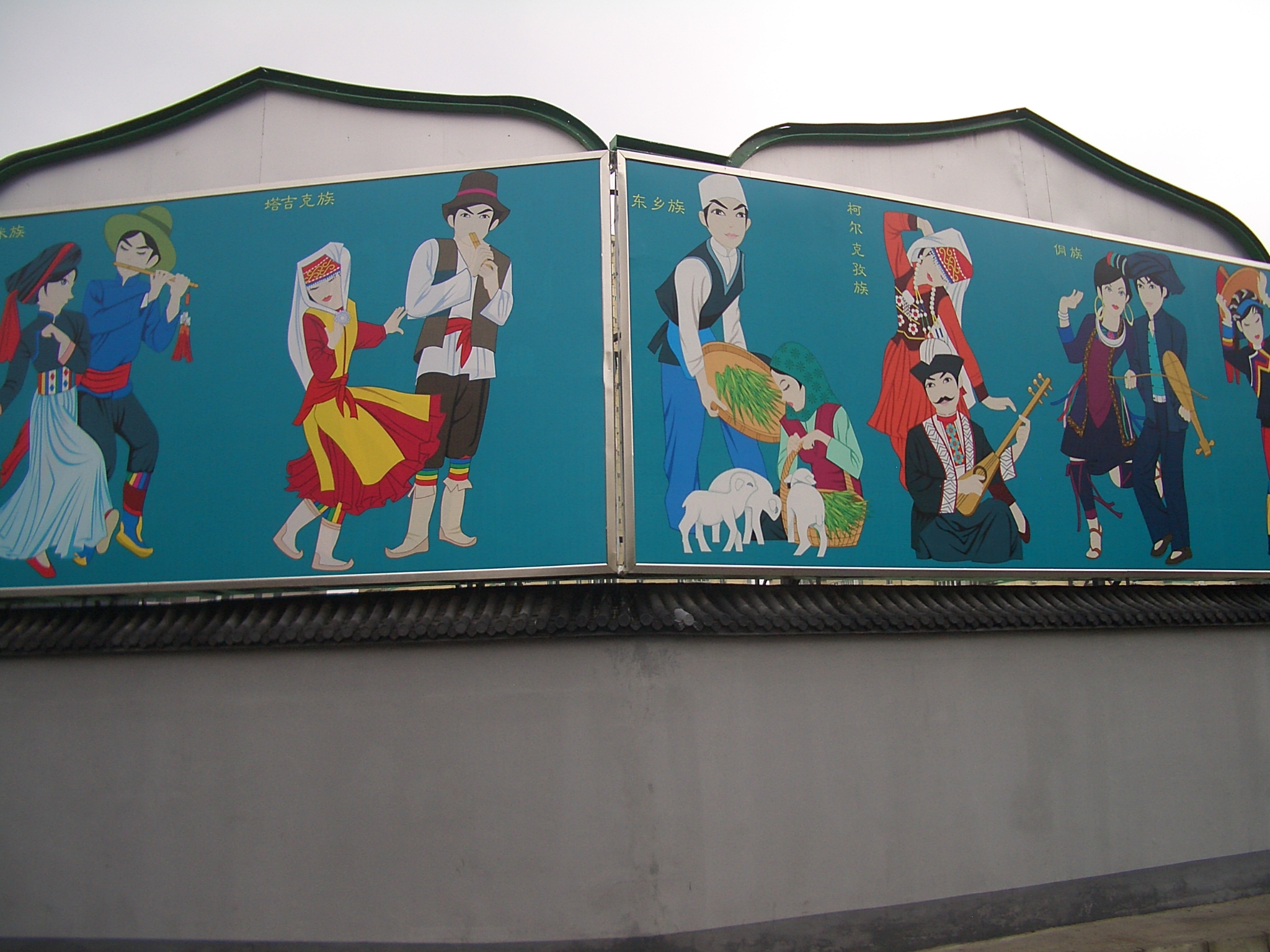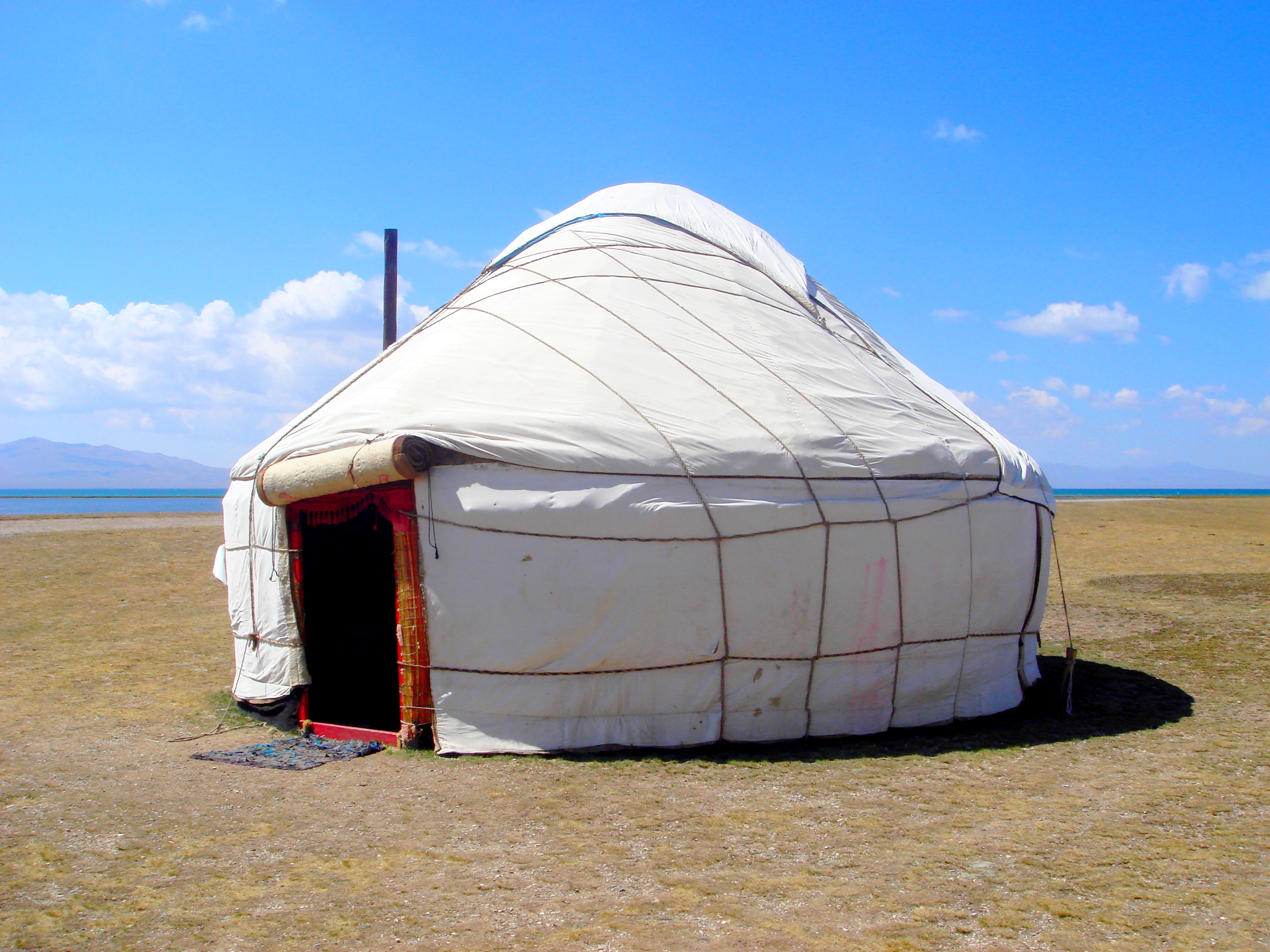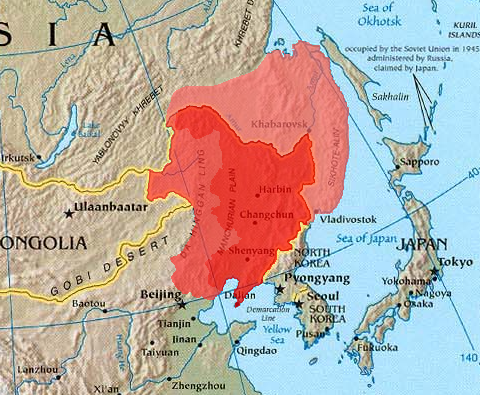|
Fuyu Kyrgyz People
The Fuyu Kyrgyz are a Turkic ethnic group who reside in Heilongjiang, China. They primarily reside in the Fuyu County. Migration The Fuyu Kyrgyz resided in the region of East Turkestan, modern day Xinjiang, until the Qing government forced them to move to Heilongjiang nearly 200 years ago. Some Fuyu Kyrgyz came from the Russian Empire to northeast China 200 years before that. Some Fuyu Kyrgyz from Dzungaria moved to Manchuria in 1761. Relations with the Khakas The Khakas are one of the closest groups to the Fuyu Kyrgyz. The Fuyu Kyrgyz went by the name ''Khonkoro'' during their exile. Language Although the Fuyu Kyrgyz number more than 1,400, only 10 people speak the language and most people have shifted to the Mongolic language Oirat or Mandarin. It is closely related to Khakas. Culture Many of the Fuyu Kyrgyz are cattle breeders and are also involved in hunting. The Fuyu Kyrgyz used to live in Mongolic-Turkic yurts, and the people wear loose clothing and belts. The ... [...More Info...] [...Related Items...] OR: [Wikipedia] [Google] [Baidu] |
Fuyu County, Heilongjiang
Fuyu () is a county of western Heilongjiang province, China, under the administration of Qiqihar City, the downtown of which is to the southwest. Various economic crops and the milk are produced in the fertile land. The county has an area of , and a population of 300,000 inhabitants. Toponymy Fuyu County is named after the nearby , which derives from a Jurchen word for waterlogged depression. The county's name been transcribed into Chinese in a number of different ways, such as Wuyur (), Huyur (), Huyur (), and Wuyur (). History The area of present-day Fuyu County was once inhabited by the Sushen. The area also once belonged to the kingdom of Buyeo, and later . The area would later be inhabited by the Heishui Mohe. The Liao dynasty then conquered the area, and placed it under , which was then administered by . Under the Jin dynasty, the area was administered as . Following the Jin dynasty, the area was ruled by the Yuan dynasty. Under the Ming dynasty, which followe ... [...More Info...] [...Related Items...] OR: [Wikipedia] [Google] [Baidu] |
Russian Empire
The Russian Empire was an empire and the final period of the List of Russian monarchs, Russian monarchy from 1721 to 1917, ruling across large parts of Eurasia. It succeeded the Tsardom of Russia following the Treaty of Nystad, which ended the Great Northern War. The rise of the Russian Empire coincided with the decline of neighbouring rival powers: the Swedish Empire, the Polish–Lithuanian Commonwealth, Qajar Iran, the Ottoman Empire, and Qing dynasty, Qing China. It also held colonies in North America between 1799 and 1867. Covering an area of approximately , it remains the list of largest empires, third-largest empire in history, surpassed only by the British Empire and the Mongol Empire; it ruled over a population of 125.6 million people per the Russian Empire Census, 1897 Russian census, which was the only census carried out during the entire imperial period. Owing to its geographic extent across three continents at its peak, it featured great ethnic, linguistic, re ... [...More Info...] [...Related Items...] OR: [Wikipedia] [Google] [Baidu] |
Kyrgyz In China
The Kyrgyz () are a Turkic ethnic group and form one of the 56 ethnic groups officially recognized by the People's Republic of China. Mainly distributed in Kizilsu Kirgiz Autonomous Prefecture in the southwest of Xinjiang Uygur Autonomous Region, a few are distributed in neighboring Uqturpan, Aksu City, Yarkant, Yengisar, Taxkorgan and Pishan, as well as Turks, Zhaosu, Emin , Bole, Jinghe and Gongliu in northern Xinjiang. According to the fifth national census of the People's Republic of China, there are 160,875 Kyrgyz people in China. History At the end of the 3rd century BC, The Xiongnu conquered the Kyrgyz ancestors who lived around the Khyargas Lake and were called "Ge Kun". At the beginning of the seventh century AD, the Kyrgyz people were ruled by the Turks and were called "Qigu". After the Tang Empire defeated the Turks, they belonged to the Protectorate of Yanran. Later, it was conquered by the Huihe Khanate, and it was called Xigas. In the 9th century, Xigas gradually ... [...More Info...] [...Related Items...] OR: [Wikipedia] [Google] [Baidu] |
Äynu People
The Äynu (also Ainu, Abdal and Aini) are Turkic people native to the Xinjiang region of China, where they are unrecognized ethnic group as part of the Uyghurs. They speak the Äynu language and mainly adhere to Alevism. There are estimated to be around 30,000 to 50,000 Äynu people, mostly located on the fringe of the Taklamakan Desert. History The origins of the Äynu people are disputed. Some historians theorize that the ancestors of the Äynu were an Iranian-related nomadic people who came from Persia several hundred years ago or more, while others conclude that the Persian vocabulary of the Äynu language is a result of Iranian languages being once the major trade languages of the region or Persian traders intermarrying with local women. The Äynu at some point converted to Islam in tandem with the Uyghurs. Tension with the Uyghurs and other Turkic peoples of the area resulted in them being pushed out to the less fertile region of the Tarim Basin near the Taklamakan D ... [...More Info...] [...Related Items...] OR: [Wikipedia] [Google] [Baidu] |
Tuva People
The Tuvans ( tyv, Тывалар, Tıvalar) are a TurkicOtto Maenchen-Helfen, Journey to Tuva, p. 169 ethnic group indigenous to Siberia who live in Russia (Tuva), Mongolia, and China. They speak Tuvan, a Siberian Turkic language. They are also regarded in Mongolia as one of the Uriankhai peoples. Tuvans have historically been cattle-herding nomads, tending to herds of goats, sheep, camels, reindeer, cattle and yaks for the past thousands of years. They have traditionally lived in yurts covered by felt or chums, layered with birch bark or hide that they relocate seasonally as they move to newer pastures. Traditionally, the Tuvans were divided into nine regions called ''khoshuun'', namely the Tozhu, Salchak, Oyunnar, Khemchik, Khaasuut, Shalyk, Nibazy, Daavan and Choodu, and Beezi. The first four were ruled by Uriankhai Mongol princes, while the rest were administered by Borjigin Mongol princes. History Besides prehistoric rock-carvings to be found especially along the Ye ... [...More Info...] [...Related Items...] OR: [Wikipedia] [Google] [Baidu] |
Yurts
A yurt (from the Turkic languages) or ger ( Mongolian) is a portable, round tent covered and insulated with skins or felt and traditionally used as a dwelling by several distinct nomadic groups in the steppes and mountains of Central Asia. The structure consists of a flexible angled assembly or latticework of wood or bamboo for walls, a door frame, ribs (poles, rafters), and a wheel (crown, compression ring) possibly steam-bent as a roof. The roof structure is sometimes self-supporting, but large yurts may have interior posts supporting the crown. The top of the wall of self-supporting yurts is prevented from spreading by means of a tension band which opposes the force of the roof ribs. Yurts take between 30 minutes and 3 hours to set up or take down, and are generally used by between five and 15 people. Nomadic farming with yurts as housing has been the primary life style in Central Asia, particularly Mongolia, for thousands of years. Modern yurts may be permanently built o ... [...More Info...] [...Related Items...] OR: [Wikipedia] [Google] [Baidu] |
Khakas Language
Khakas (also known as Xakas, endonym: хакас тілі, ''khakas tįlį'', тадар тілі, ''tadar tįlį'') is a Turkic language spoken by the Khakas people, who mainly live in the southwestern Siberian Khakas Republic, in Russia. The Khakas number 73,000, of whom 42,000 speak the Khakas language. Most Khakas speakers are bilingual in Russian. Traditionally, the Khakas language is divided into several closely related dialects, which take their names from the different tribes: , , Koybal, Beltir, and Kyzyl. In fact, these names represent former administrative units rather than tribal or linguistic groups. The people speaking all these dialects simply referred to themselves as Tadar (i.e. Tatar). History and documentation The people who speak the Fuyu Kyrgyz language originated in the Yenisei region of Siberia but were relocated into the Dzungar Khanate by the Dzungars, and then the Qing moved them from Dzungaria to northeastern China in 1761, and the name may ... [...More Info...] [...Related Items...] OR: [Wikipedia] [Google] [Baidu] |
Mandarin Chinese
Mandarin (; ) is a group of Chinese (Sinitic) dialects that are natively spoken across most of northern and southwestern China. The group includes the Beijing dialect, the basis of the phonology of Standard Chinese, the official language of China. Because Mandarin originated in North China and most Mandarin dialects are found in the north, the group is sometimes referred to as Northern Chinese (). Many varieties of Mandarin, such as those of the Southwest (including Sichuanese) and the Lower Yangtze, are not mutually intelligible with the standard language (or are only partially intelligible). Nevertheless, Mandarin as a group is often placed first in lists of languages by number of native speakers (with nearly one billion). Mandarin is by far the largest of the seven or ten Chinese dialect groups; it is spoken by 70 percent of all Chinese speakers over a large geographical area that stretches from Yunnan in the southwest to Xinjiang in the northwest and Heilongjia ... [...More Info...] [...Related Items...] OR: [Wikipedia] [Google] [Baidu] |
Mongolic Languages
The Mongolic languages are a language family spoken by the Mongolic peoples in Eastern Europe, Central Asia, North Asia and East Asia, mostly in Mongolia and surrounding areas and in Kalmykia and Buryatia. The best-known member of this language family, Mongolian, is the primary language of most of the residents of Mongolia and the Mongol residents of Inner Mongolia, with an estimated 5.7+ million speakers. Classification The Mongolic languages have no convincingly established living relatives. The closest relatives of the Mongolic languages appear to be the para-Mongolic languages, which include the extinct Khitan, Tuyuhun, and possibly also Tuoba languages. A few linguists have grouped Mongolic with Turkic, Tungusic and possibly Koreanic and Japonic as part of the widely discredited Altaic family. History The stages of Historical Mongolic are: * Pre-Proto-Mongolic, from approximately the 4th century AD until the 12th century AD, influenced by Common Turkic, and prev ... [...More Info...] [...Related Items...] OR: [Wikipedia] [Google] [Baidu] |
Manchuria
Manchuria is an exonym (derived from the endo demonym "Manchu") for a historical and geographic region in Northeast Asia encompassing the entirety of present-day Northeast China (Inner Manchuria) and parts of the Russian Far East ( Outer Manchuria). Its meaning may vary depending on the context: * Historical polities and geographical regions usually referred to as Manchuria: ** The Later Jin (1616–1636), the Manchu-led dynasty which renamed itself from "Jin" to "Qing", and the ethnicity from "Jurchen" to "Manchu" in 1636 ** the subsequent duration of the Qing dynasty prior to its conquest of China proper (1644) ** the northeastern region of Qing dynasty China, the homeland of Manchus, known as "Guandong" or "Guanwai" during the Qing dynasty ** The region of Northeast Asia that served as the historical homeland of the Jurchens and later their descendants Manchus ***Qing control of Dauria (the region north of the Amur River, but in its watershed) was contested in 1643 ... [...More Info...] [...Related Items...] OR: [Wikipedia] [Google] [Baidu] |
Dzungaria
Dzungaria (; from the Mongolian words , meaning 'left hand') is a geographical subregion in Northwest China that corresponds to the northern half of Xinjiang. It is thus also known as Beijiang, which means "Northern Xinjiang". Bounded by the Altai Mountains to the north and the Tian Shan mountain range to the south, Dzungaria covers approximately , and borders Kazakhstan to the west and Mongolia to the east. In contexts prior to the mid-18th century Dzungar genocide, the term "Dzungaria" could cover a wider area, conterminous with the Oirat-led Dzungar Khanate. Although Dzungaria is geographically, historically, and ethnically distinct from the Tarim Basin (or Nanjiang, ), the Manchu-led Qing dynasty integrated both areas into one province, Xinjiang. Dzungaria is Xinjiang's center of heavy industry, generates most of the region's GDP, and houses its political capital Ürümqi ( Oirat for 'beautiful pasture'). As such, Dzungaria continues to attract intraprovincial and inte ... [...More Info...] [...Related Items...] OR: [Wikipedia] [Google] [Baidu] |






